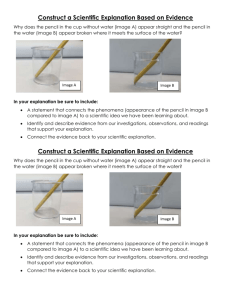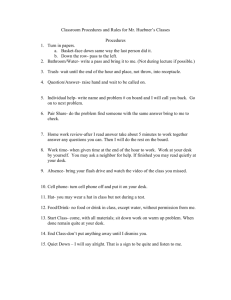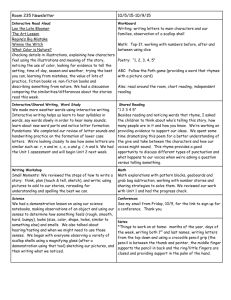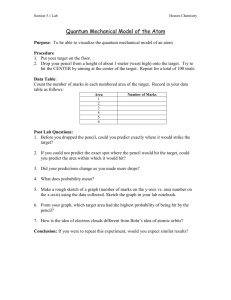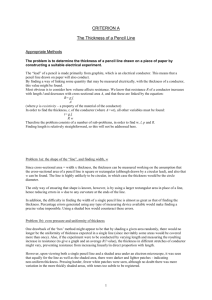I read with interest The Thickness of a Pencil
advertisement
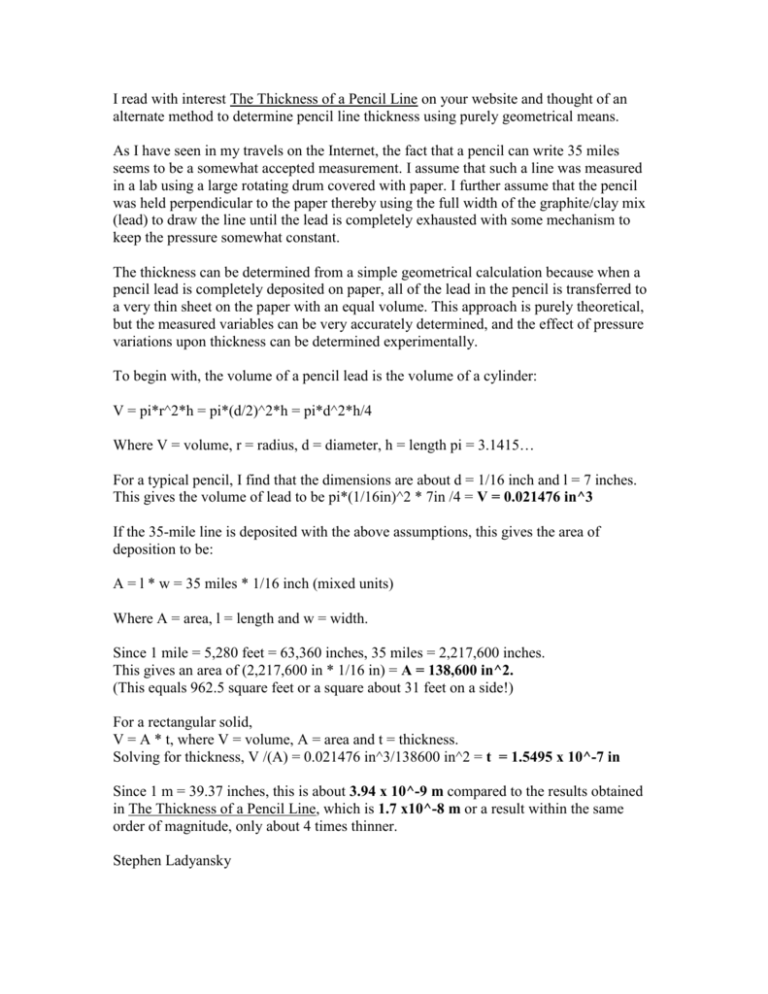
I read with interest The Thickness of a Pencil Line on your website and thought of an alternate method to determine pencil line thickness using purely geometrical means. As I have seen in my travels on the Internet, the fact that a pencil can write 35 miles seems to be a somewhat accepted measurement. I assume that such a line was measured in a lab using a large rotating drum covered with paper. I further assume that the pencil was held perpendicular to the paper thereby using the full width of the graphite/clay mix (lead) to draw the line until the lead is completely exhausted with some mechanism to keep the pressure somewhat constant. The thickness can be determined from a simple geometrical calculation because when a pencil lead is completely deposited on paper, all of the lead in the pencil is transferred to a very thin sheet on the paper with an equal volume. This approach is purely theoretical, but the measured variables can be very accurately determined, and the effect of pressure variations upon thickness can be determined experimentally. To begin with, the volume of a pencil lead is the volume of a cylinder: V = pi*r^2*h = pi*(d/2)^2*h = pi*d^2*h/4 Where V = volume, r = radius, d = diameter, h = length pi = 3.1415… For a typical pencil, I find that the dimensions are about d = 1/16 inch and l = 7 inches. This gives the volume of lead to be pi*(1/16in)^2 * 7in /4 = V = 0.021476 in^3 If the 35-mile line is deposited with the above assumptions, this gives the area of deposition to be: A = l * w = 35 miles * 1/16 inch (mixed units) Where A = area, l = length and w = width. Since 1 mile = 5,280 feet = 63,360 inches, 35 miles = 2,217,600 inches. This gives an area of (2,217,600 in * 1/16 in) = A = 138,600 in^2. (This equals 962.5 square feet or a square about 31 feet on a side!) For a rectangular solid, V = A * t, where V = volume, A = area and t = thickness. Solving for thickness, V /(A) = 0.021476 in^3/138600 in^2 = t = 1.5495 x 10^-7 in Since 1 m = 39.37 inches, this is about 3.94 x 10^-9 m compared to the results obtained in The Thickness of a Pencil Line, which is 1.7 x10^-8 m or a result within the same order of magnitude, only about 4 times thinner. Stephen Ladyansky
